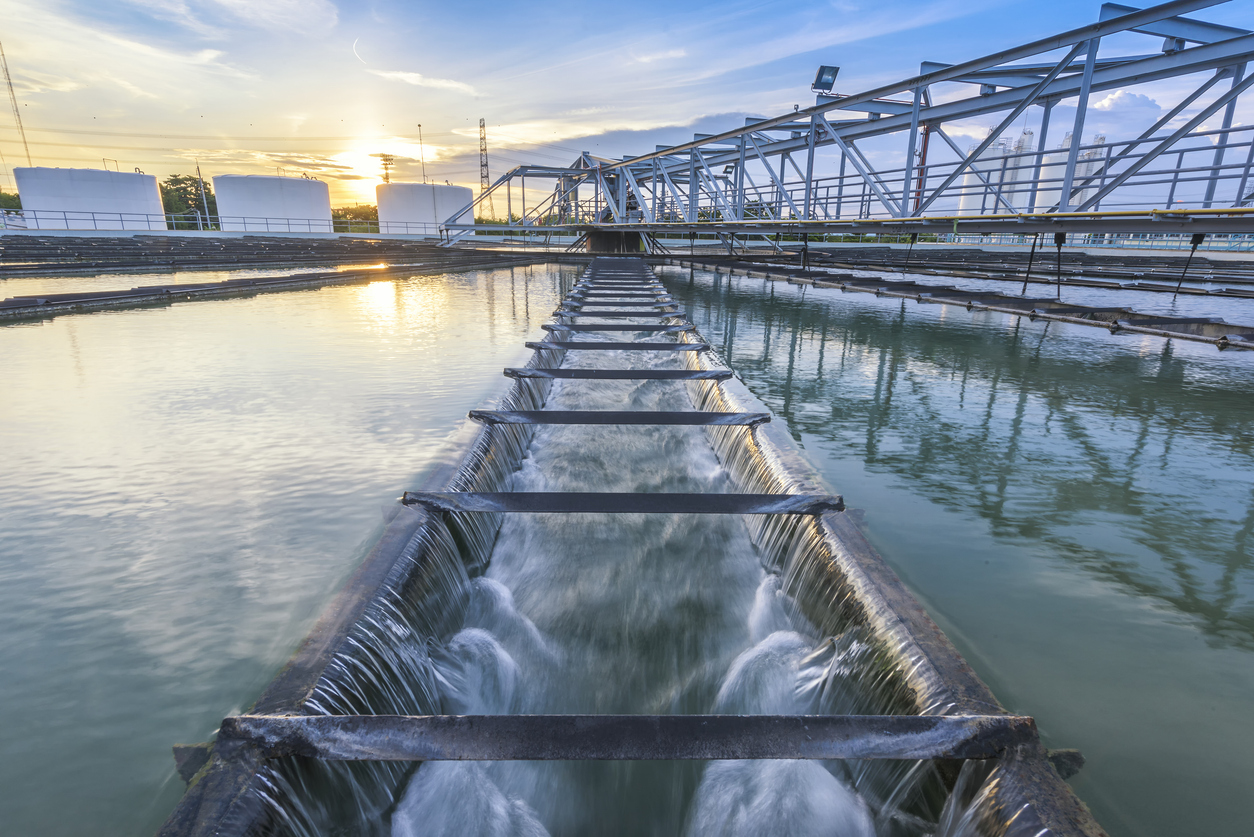
Litehouse, Inc. is a food and beverage (F&B) manufacturer located in Lowell, Michigan that generates an average of 75,000 gallons of wastewater a day. The treated wastewater generated at the facility then flows to the Lowell Wastewater Treatment Plant and must meet local discharge limits.
The facility’s wastewater changes in organics loading and flow based on production variations, making treatment optimization a challenge. The wastewater treatment decisions rely on information about loading changes to manage their onsite dissolved air flotation (DAF) units in order to meet daily discharge limits to the Lowell Plant. If they didn’t meet the limits, they had to haul off untreated wastewater. Like many food and beverage manufacturers, Litehouse wanted to find a faster, easier monitoring tool that could provide actionable data more quickly in order to improve operational control of their wastewater treatment plant and eliminate permit violations.
What challenges did the F&B manufacturer experience with BOD and COD?
Food and beverage facilities tend to have high and variable amounts of organic content in wastewater. This is due to the fact that most F&B ingredients are organic compounds - sugars, dyes, proteins, flavors, carbohydrates, etc. When monitoring organics levels, the facility utilized common methods that have been historically adopted: Biochemical Oxygen Demand (BOD) and Chemical Oxygen Demand (COD).
The Litehouse plant’s permit relies on a daily BOD limit, and operationally they were conducting COD analysis at the beginning of each shift. However, there were challenges that arose from these two water monitoring methods due to the delay in obtaining necessary data. BOD analysis is performed at a third-party laboratory and requires five days to receive data. While COD analysis takes less time (several hours) and can be used for control through a site-specific COD:BOD ratio, the plant was unable to maximize wastewater treatment throughput due to the delay in necessary data. Instead, the facility opted for the untreated wastewater to be taken by a third-party vendor, which cost the facility in excess of $1.2 million annually as a result of delay in data collection.
What are common water monitoring needs for F&B wastewater treatment?
Discharge compliance is important to food and beverage manufacturers, and monitoring water quality upstream and throughout production can be highly beneficial to improving wastewater treatment operations, and ultimately ensuring compliance. Oftentimes, wastewater treatment and monitoring are afterthoughts in the F&B industry, as manufacturers tend to focus on productivity, manufacturing, and generating revenue.
Wastewater treatment costs are seen as secondary, but minimizing waste generation and maximizing throughput are two simple ways to reduce costs. With better process monitoring, operational efficiency and profitability can increase, compliance goals can be met, and improvements can be made in downstream actions.
Here are benefits that F&B manufacturers can gain from wastewater monitoring:
- Improve operational control of the wastewater treatment plant
- Eliminate permit violations and non-compliance issues
- Collect data about organics level in wastewater streams more efficiently
- Process more wastewater through efficient operation
How can total organic carbon (TOC) monitoring reduce time and costs through effective process adjustments?
With the goal of decreasing spend on untreated wastewater and to ensure compliance standards, Litehouse switched from BOD/COD monitoring to total organic carbon (TOC) monitoring as the primary measurement for organics loading coming from production. Similar to generating a correlation between COD:BOD, the plant was able to generate a reliable site-specific correlation between TOC:BOD to use TOC for process monitoring.
By implementing TOC analysis, analysis time is shortened to just a few minutes versus two hours for COD and five days for BOD. As a result of the efficiency in data, Litehouse experienced a 29% increase in monthly wastewater treatment capacity. By bringing monitoring in-house, they were able to reduce spend on third-party services which annualized to over $700,000 in savings.
TOC analysis for wastewater monitoring is an accurate, precise and simple monitoring tool that can generate confidence in process decision making. Real-time information of production changes can allow F&B plants to make adjustments that result in cost savings, time savings, better operational control, and discharge compliance.
Click here to explore the full range of Sievers TOC Analyzers, and to find the right one for your water monitoring needs!
Author: Sara Speak
Sara Speak is a Product Application Specialist with Veolia | Water Tech, providing support and application expertise to Sievers Analytical Instruments customers in industries such as chemical, petrochemical, food & beverage, and municipal wastewater.
Sara works with customers to provide training, support product installations, optimize equipment use, and demo feasibility across different testing applications. Prior to her current role, she was a Factory Service Technician, responsible for repairing and troubleshooting Sievers instruments. Sara previously worked in the food and beverage industry as a QA Laboratory Technician at MillerCoors and Leprino Foods. She holds a Bachelor of Science (B.S.) in Chemistry and a Bachelor of Music (B.M.) in Violin Performance from Metropolitan State University of Denver.
